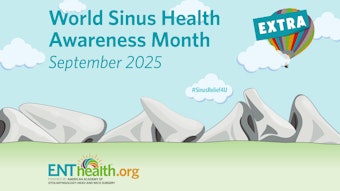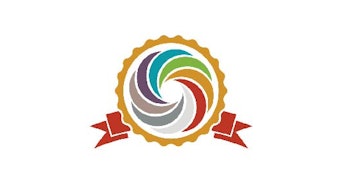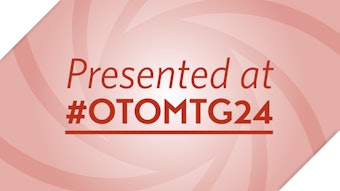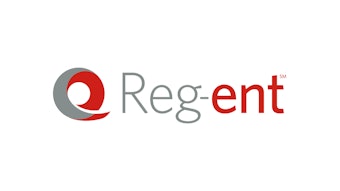EHR Efficiency Tips for Otolaryngologists
Use your electronic health record (EHR) system more efficiently to spend less time on documentation and more time with your patients.
J. Randall Resser, MD, J.P. Giliberto, MD, and Jose W. Ruiz, MD
Author disclosures follow at the end of this article.

Electronic health record (EHR) systems offer numerous benefits to clinicians. When used as an integral part of care, they can streamline the management of patient information, facilitate better communication among clinicians, and empower patients to be more involved in their healthcare with access to a patient portal. However, time spent on EHR management can detract from time with patients.
Although this article focuses specifically on tips for use with the EPIC EHR system, the broader principles are relevant to other EHR systems.
In the fast-paced world of otolaryngology, managing EHR efficiently is crucial. Otolaryngologists often face a high volume of patients and complex cases, making efficient EHR management essential. Studies indicate that otolaryngologists spend an average of 2.6 hours per full clinic day on EHR tasks, including chart reviews, in-basket management, note-taking, and order placements. Enhancing EHR efficiency can significantly reduce this time, allowing more focus on patient care.
Although there are several areas that can lead to efficient use of the EHR for patient care, they can be broadly grouped into four main domains: data review, ordering, documentation, and “in-basket.”
Data Review
The Epic EHR stores a tremendous amount of patient information that crosses all specialties and professions. Otolaryngology-specific information can often be difficult to find. Being able to search and/or filter the chart for relevant information is critical for time management and efficiency.
Chart Search
Chart search is an extremely useful but commonly underused review tool. It is an always available search bar that allows the user to find any text that is found in the patient's medical record. It functions similarly to the way Google searches the internet. A query will locate any record in the chart that contains the searched text. This can then be filtered into items like orders, notes, procedures, and medicines to help find specific information.
Chart Review Filters
Most clinicians are familiar with the chart review tab to find patient information. Chart filters can be created on a system and user level to allow each tab (encounters, notes, labs, imaging, etc.) to be filtered to what the otolaryngologist needs. For example, notes can be filtered by the note type (e.g., OP notes), your clinic’s notes, your specialty’s notes, or only notes authored by you. Imaging can be filtered by ordering clinician, specialty, or imaging type.
Reports
Reports are another way to access relevant patient information. This can be presented in a variety of places and formats. Commonly used workspaces in Epic, such as chart search, are essentially reports that present data to the clinician. Reports can also be found in the in-basket, schedules, and preoperative workflows to allow the clinician to access information without leaving the activity in which they are working. Specialized reports can also be created by your system’s IT team to pull relevant data to fit your specific needs.
Ordering
Being able to quickly access and enter orders is essential to being productive. Taking time to personalize orders so they do not have to be modified at the point of care is also important. For larger clinics, a good practice is to have one user be the “superuser” who maintains the personalized orders so that the rest of the clinic can use the optimized orders. There are several areas that can be optimized.
Preference Lists
Preference lists are a collection of commonly used orders. These can be organized by condition, modality, or procedure for quick access. Maintaining an up-to-date list reduces the need to search for individual orders each time. By saving preferred orders, commonly used options can be pre-populated in the order, streamlining the process and improving efficiency.
SmartSets and Order Sets
SmartSets and order sets are collections of items like orders, diagnosis, charges, and follow-ups that allow for easy access of commonly grouped orders. These can be set up initially by your IT team to collect the orders, and the orders themselves can be personalized by the clinician. Common order sets used by otolaryngologists include preoperative and admission order sets. Making personalized versions of SmartSets and order sets helps eliminate or reduce hard stops and streamline the ordering process. For example, creating multiple versions of a preop order set for different versions of a thyroidectomy (right, left, total, etc.) allows for one-click ordering without modifying individual orders in the order set.
Documentation
There are several tools available in Epic to help the user document quickly and efficiently. It is helpful to know what methods of documentation work best for the individual to know which tools are most effective. For example, users who are proficient in typing would benefit from keyboard shortcuts or autocorrect while clinicians who use dictation benefit from dictation command macros. Here are a few helpful tools.
User Dictionary and Autocorrect
The user dictionary contains an autocorrect feature that can replace shorthand or abbreviations with full text. By typing an abbreviation, something like “AOM,” can expand to “acute otitis media” and save keystrokes.
Hotkeys
Most Microsoft hotkeys like CTRL +C (copy) also work in Epic. Familiarize yourself with Epic’s hotkeys to navigate and document more efficiently. Most users know about F2 for the next wildcard. CTRL + SHIFT combinations allow for quick navigation though the chart (CTRL + SHIFT + P = problem list, CTRL + SHIFT + I = patient instructions, CTRL + SHIFT + Z = charge capture, etc.). Some of these can be found with a help tip displayed by hovering over buttons.
SmartTools
Use SmartLinks, SmartLists, and SmartPhrases to automate and streamline documentation. These tools can pull in data from the EHR (SmartLinks), provide selectable dropdown menus (SmartLists), and insert pre-defined text (SmartPhrases). SmartPhrases can be created easily by highlighting long text entries and right-clicking “create smartphrase.” After saving, the phrase can be called up using the created “dotphrase” name saving documentation time.
Sticky Notes
Use sticky notes for reminders and quick access to important patient information. These can be personalized and pinned to always display when opening a chart. Sticky notes can either be private (visible only to the clinician who created them) or shared across the care team, depending on the intended audience.
In-Basket
Although the in-basket is meant to make communications more efficient, it can become a large burden for the clinician. Learning how to efficiently work through in-basket messages is important for clinician well-being and optimal patient care. The in-basket contains several reports that allow the clinician to review patient information such as demographics, the last note and encounter with the patient, medicines, allergies, and results. These reports prevent having to leave messages to review information, keeping clinicians on task. Quick actions automate common in-basket tasks, such as sending replies, forwarding messages, and documenting results.
Conclusion
By implementing these strategies, otolaryngologists can significantly reduce the time spent on EHR tasks, allowing more time for patient care and personal activities. Further details and instructions on many of these tips and more can be found on the Epic Earth community platform at https://www.epicearth.com/Discussions/View/12438.
For further questions or assistance, the authors can be contacted at:
J.P. Giliberto: jpgent@uw.edu
J. Randall Resser: john.resser@bhsi.com
Jose W. Ruiz: jruiz6@med.miami.edu
Author disclosures: All three authors serve on the Epic Adult ENT Specialty Steering Board to drive efficiency and add value to the EHR from an otolaryngology perspective but do not receive any monies or consulting fees from Epic.











